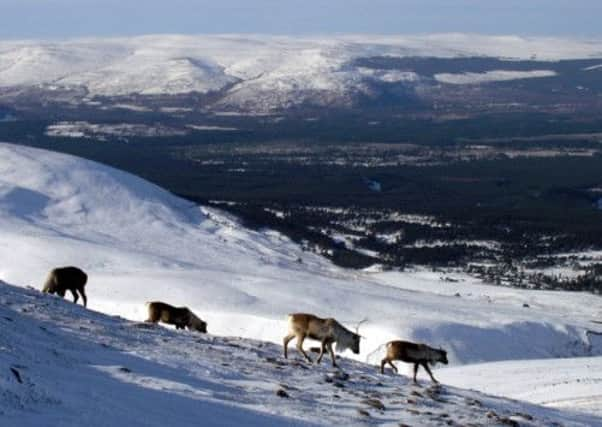The Cairngorms: Where the wild things still are


Here, among the rolling landscape, with its blizzards and snowdrifts, is an arctic environment like no other in the UK. Deep in the glens surrounding the Cairngorms massif are the remnants of the Old Caledonian Pinewood, naturally regenerated over thousands of years since the retreat of the last Ice Age.
We are so fortunate to have such magnificent wildlife and wild land resources within a few hours of travel from Scotland’s major cities. These lands are accessible to anyone, the foundation of much of our tourism economy and the envy of the rest of the world.
Advertisement
Hide AdAdvertisement
Hide AdScottish Natural Heritage (SNH) is currently consulting on a map of wild land in Scotland, reminding us that high-quality wild land is extensive. The best areas cover around 20 per cent of our land mass, with examples from the Western Isles to Aberdeenshire, from Shetland to Galloway. This is where the natural beauty of Scotland is at its finest, where the forces of nature are stronger than those of the industrial world, where human activity has left its mark, but less so than in town and city, and where the power of nature to restore and replenish is supreme.
New hill tracks
But are these places safe? SNH has quantified the decline in land unaffected by intrusion from manmade structures from 41 per cent in 2002 to 28 per cent in 2009. In the Cairngorms, the threats are obvious: projects to build windfarms just outside the park boundary; tree planting in the glens where natural regeneration, not artificial restocking, is required; huge stretches of deer fencing where landowners refuse to reduce deer populations down to levels that permit regeneration of moorland and woodland; and, sprouting up every week, new hill tracks erected without planning permission and proper public consultation. And this is the Cairngorms National Park, a potential World Heritage Site!
So what has the SNP government done to rectify these problems, which are found to varying degrees across the whole of Scotland, since it came to power in 2007? Precious little. The degradation and loss of wild land, as demonstrated by SNH, needs to be addressed as a matter of urgency.
Many who enjoy outdoor recreation will ponder which constitutional arrangement will best protect Scotland’s wild land, and which politicians are demonstrating sufficient understanding and commitment to the task.
The relentless march of massive wind turbines across our landscape is quite extraordinary. It leaves the impression that the six multinational energy companies, along with the various lords, ladies and offshore companies who own vast tracts of our hills, are in charge of energy policy, rather than UK or Scottish politicians.
Prohibition needed
Everyone in the energy companies knows that the future for wind energy development lies offshore, so if a moratorium on large scale onshore windfarm development was announced tomorrow, would any tears be shed? Would any votes be lost?
And for the faint-hearted SNP politician, could we at least see the Cairngorms protected?
Those skiing the Cairngorm plateau this winter do not want to see the near horizon to the north and west dominated by row after row of wind turbines. A complete prohibition of any further development in the Monadliath and Dava Moor areas is urgently needed.
Advertisement
Hide AdAdvertisement
Hide AdAs for deer, why are so many of our landowners allowed to manage deer populations as though we were still stuck in the last century? Scotland manages one of its greatest wildlife assets, our wild deer populations, as though hunting trophies are more important than habitat protection, erosion control, climate change abatement and watershed protection.
In the past ten years there has been a complete failure to tackle this problem and the public price of touching the political forelock to the landowner in terms of the annual cost of deer fencing has risen from £571,000 to £5 million since 2003.
And then there are the hill tracks. Outdoor recreation interests have been complaining about their proliferation in our hills since the 1960s. The time to bring them all under planning control is now, and the evidence is before Scottish Government ministers. A failure to act is nothing less than a dereliction of duty.
Wild land is not a resource to be squandered. Its love and appreciation is at the heart of being Scottish. It is time for SNP politicians to demonstrate that they understand this and are up to the challenge of protecting our natural beauty for now and for ever.
• Dave Morris is director, Ramblers Scotland www.ramblers.org.uk/scotland
SEE ALSO